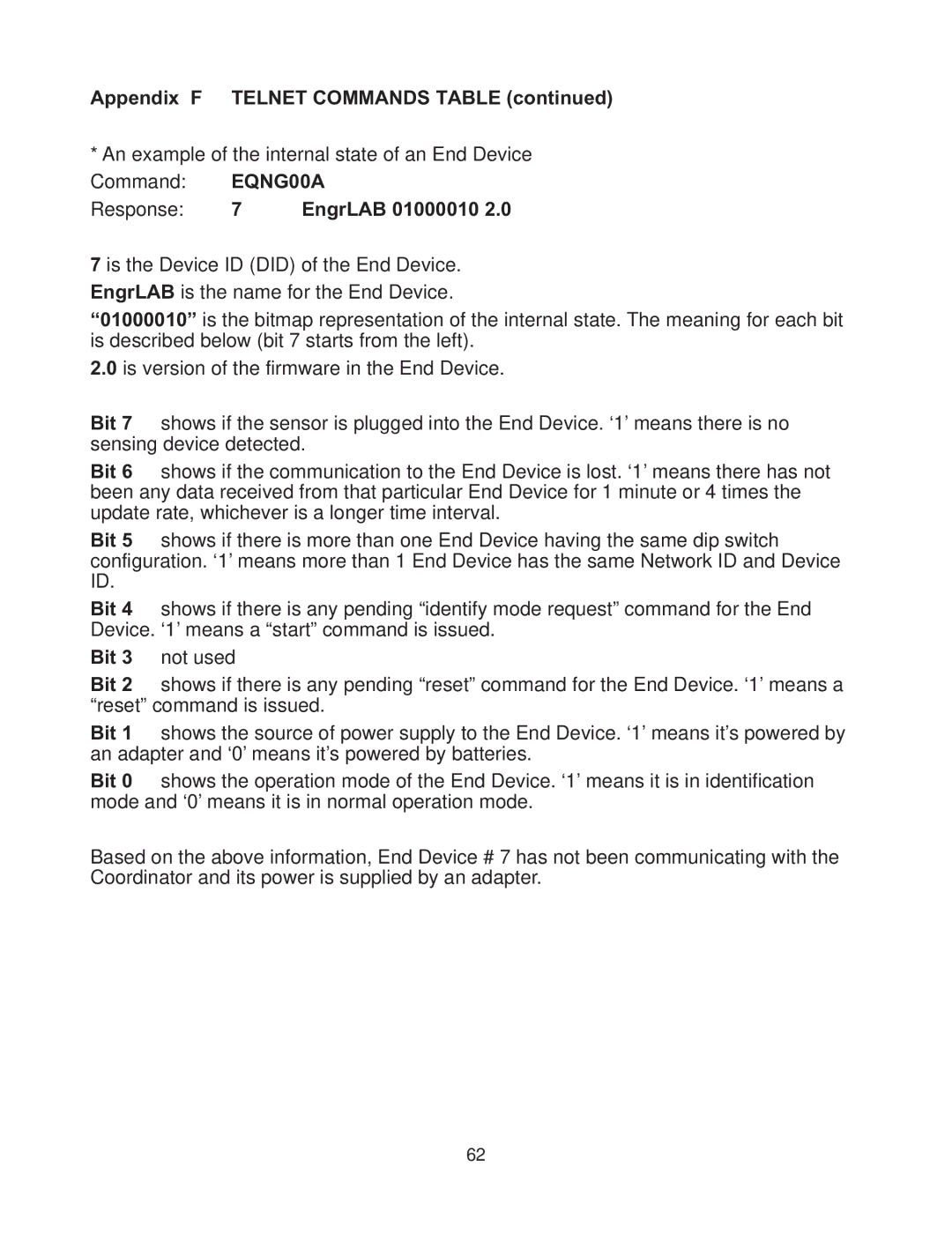Appendix F TELNET COMMANDS TABLE (continued)
*An example of the internal state of an End Device
Command: EQNG00A
Response: 7 EngrLAB 01000010 2.0
7 is the Device ID (DID) of the End Device. EngrLAB is the name for the End Device.
“01000010” is the bitmap representation of the internal state. The meaning for each bit is described below (bit 7 starts from the left).
2.0 is version of the firmware in the End Device.
Bit 7 shows if the sensor is plugged into the End Device. ‘1’ means there is no sensing device detected.
Bit 6 shows if the communication to the End Device is lost. ‘1’ means there has not been any data received from that particular End Device for 1 minute or 4 times the update rate, whichever is a longer time interval.
Bit 5 shows if there is more than one End Device having the same dip switch configuration. ‘1’ means more than 1 End Device has the same Network ID and Device ID.
Bit 4 shows if there is any pending “identify mode request” command for the End Device. ‘1’ means a “start” command is issued.
Bit 3 not used
Bit 2 shows if there is any pending “reset” command for the End Device. ‘1’ means a “reset” command is issued.
Bit 1 shows the source of power supply to the End Device. ‘1’ means it’s powered by an adapter and ‘0’ means it’s powered by batteries.
Bit 0 shows the operation mode of the End Device. ‘1’ means it is in identification mode and ‘0’ means it is in normal operation mode.
Based on the above information, End Device # 7 has not been communicating with the Coordinator and its power is supplied by an adapter.
62
